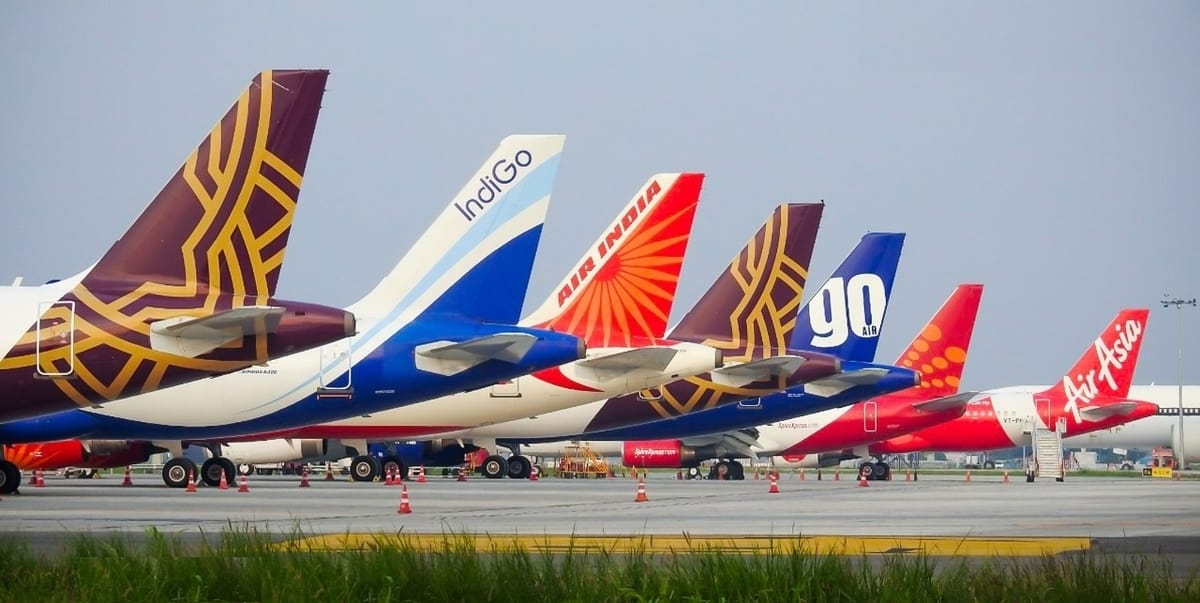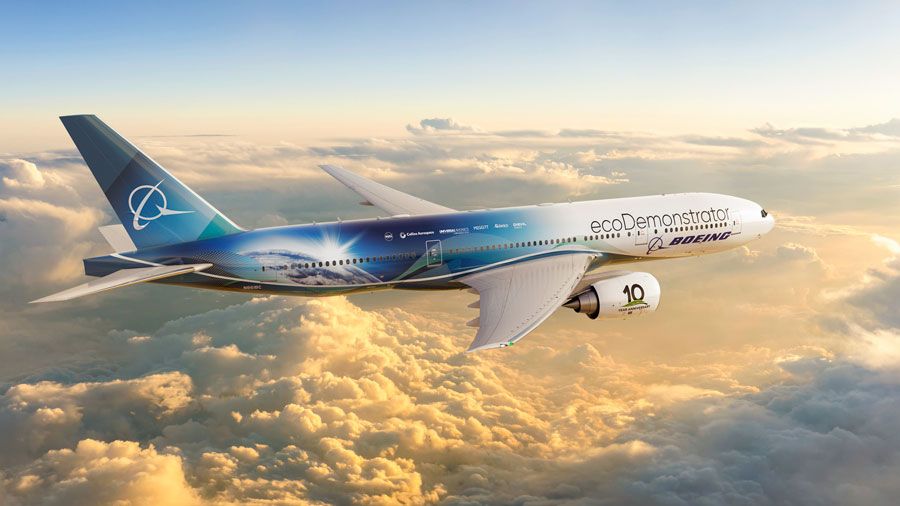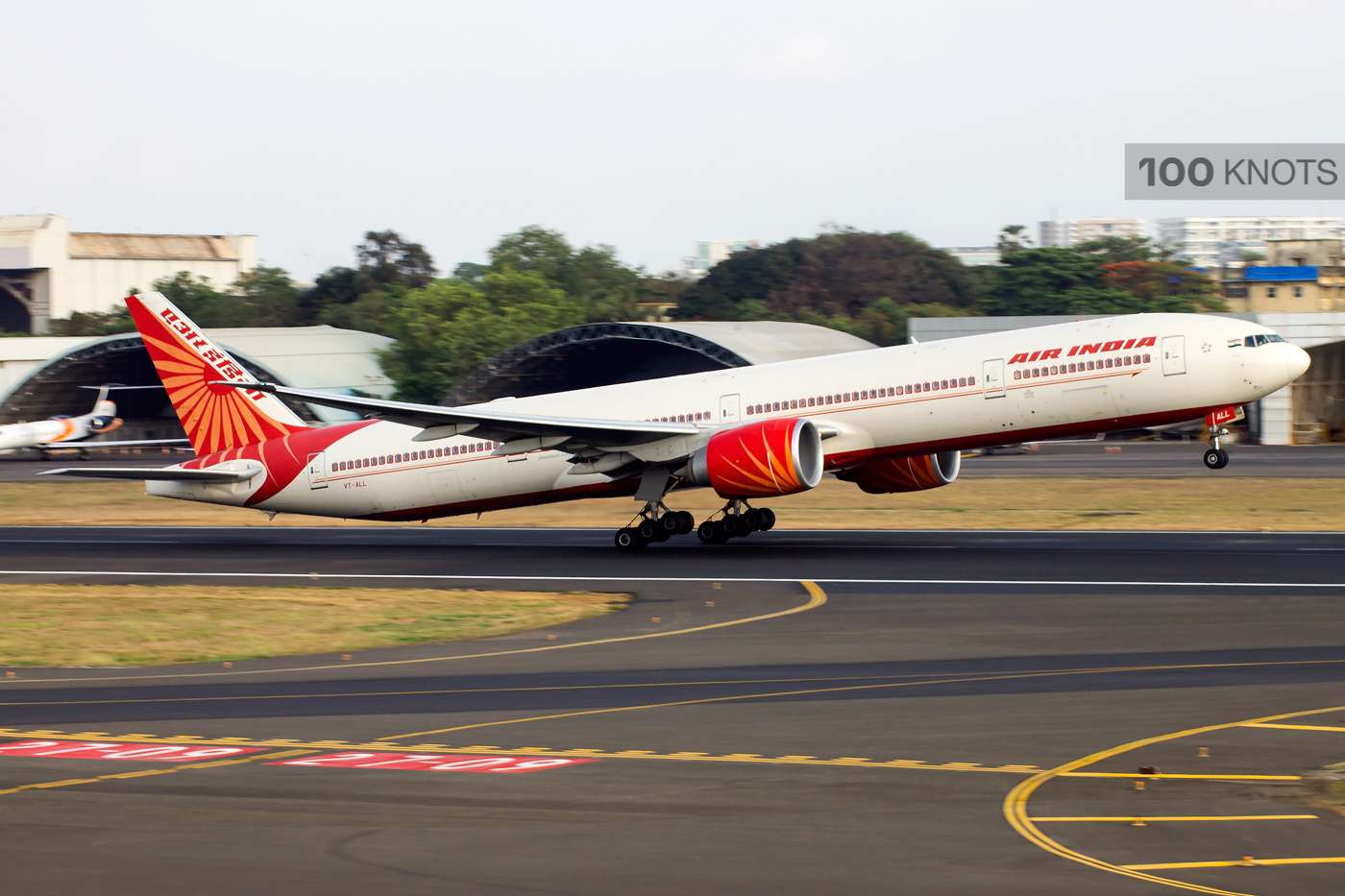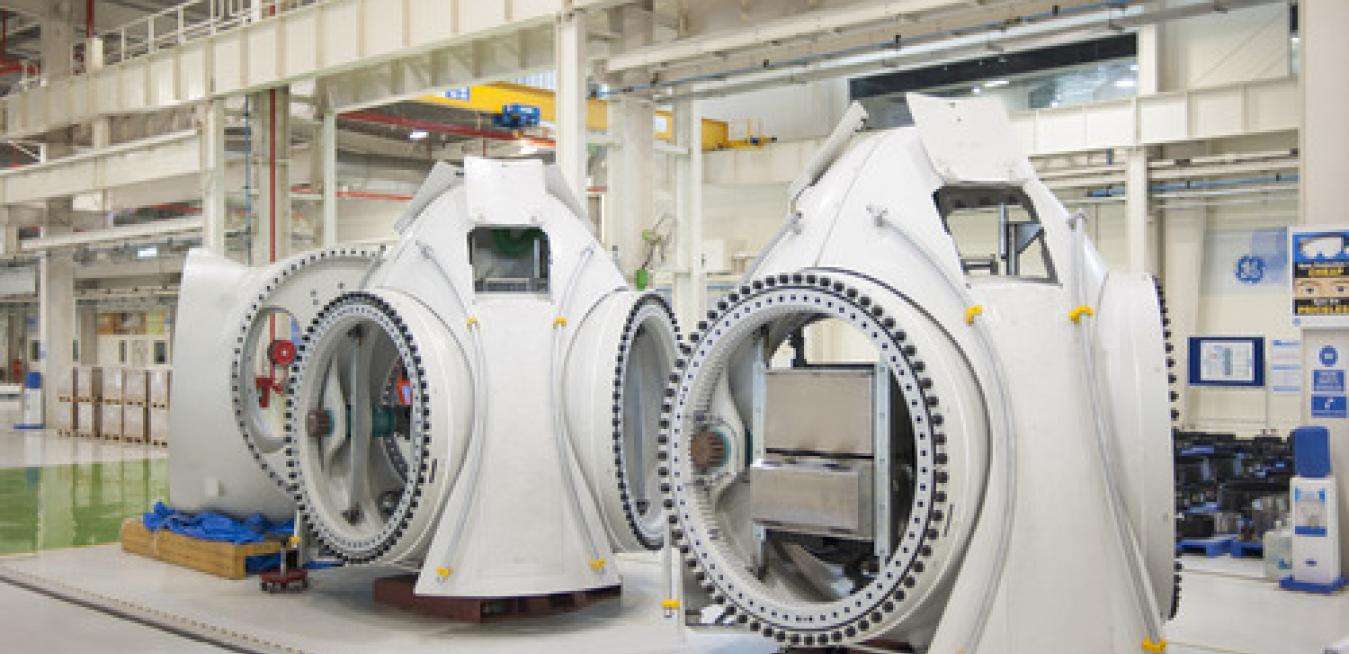The air transportation sector's best hope for achieving near-term decarbonization is sustainable aviation fuel, but numerous questions remain as plans move toward its broad usage as 100% jet fuel rather than blended with current jet fuel.
Unblended sustainable aviation fuel (SAF) emissions characteristics have not yet been examined across a variety of engine types, and there are concerns over the possible impact of its particles and chemistry on the creation of contrails.
Representative | Source
In the most current ecoDemonstrator technology programs from the firm, researchers from NASA have partnered with Boeing to assess pollutants from aircraft powered by SAF. Significantly fewer soot particles were observed during tests of a CFM International Leap 1B engine with 100% SAF on a Boeing 737-9 in 2021, while examination of just concluded tests on this year's demonstrator—a Rolls-Royce Trent 800-powered 777-200ER—is still ongoing.
We’ve got the world on the back of the aircraft, and I really wanted to get that on this ecoDemonstrator because we are now really a global assetsays Rae Lutters, ecoDemonstrator program manager
From the vault
The ten-year-old ecoDemonstrator initiative, which started in 2012 with a modest test campaign using a leased 737-800, is now a key pillar of Boeing's research and development portfolio. Boeing has kept funding the project, most recently purchasing the 777-200ER to be converted into a specialized flying technological testbed for at least the following two years.
The 100% sustainable aviation fuel (SAF)-fueled 777-200ER test bed is parked at the Everett Delivery Center with its Rolls-Royce Trent 800 engines operating at maximum thrust.
In a big van that is positioned 125 feet behind the 2022 Boeing ecoDemonstrator airplane, NASA researchers and Boeing emissions technical fellow Steve Baughcum are standing shoulder to shoulder.
Boeing
We are still early in the process of analyzing the data, but we can see the positive effects of SAF. The significantly reduced soot particles and total aerosols in the SAF emissions compared to petroleum-based conventional Jet A fuel is really encouragingBaughcum said
The ecoDemonstrator program, which combines Boeing's aerospace engineering with NASA's research skills, has been working with NASA for SAF emissions testing for the past two years. The crew also got the chance to test a 787-10 with GEnx-1B engines, and they carried out comparable testing on the 2021 Boeing ecoDemonstrator, an Alaska Airlines 737-9 with LEAP-1B engines, last year.
Boeing flight test engineers monitoring monitoring engine parameters during the emissions testing | Boeing
Testing all of these platforms with various engine technologies helps increase our understanding on how sustainable aviation fuel can have positive impacts on air quality when engines are idling at airports, and on the climate warming potential of contrails in the atmospheresaid Rich Moore, NASA’s physical research scientist
Why sustainable aviation fuel?
Sustainable aviation fuel (SAF) could probably be the only feasible and immediately available solution to hit 2050 net zero emission goals. Flying with SAF blends helps demonstrate the practicality of using alternative fuels on a daily basis, and the development of the technology will accelerate the expansion of SAF refining capacity on the industrial scale necessary for its widespread adoption in the upcoming years.
Representative | Aviation Today
Sustainable fuels are what we at Boeing believe are the best near term solution to reducing carbon emissions. This is my chance to support the industry’s commitment to net zero by 2050 and take tangible steps to ensure our airplanes are 100% SAF-capable by 2030said Bill Griffin, lead technical engineer for the Boeing ecoDemonstrator program
Moving forward
Inside the aircraft's cabin, cargo holds, or flight deck is where all other technologies that will be put to the test in the future mission are located. The 777 will go on a protracted testing program for fresh fire-extinguishing substances meant to take the place of ozone-depleting Halon 1301, which is no longer manufactured. Although alternatives to Halon have been discovered for cabins and restrooms, the industry is still compelled to recycle Halon until answers to the particular problems of fire suppression at altitude in engines, auxiliary power units, and cargo hold can be found.
A system created utilizing Jeppesen airport maps that will enable optimal taxiing operations before takeoff and after landing is one of the flight deck technologies that will be tested as part of the initiative. With the help of automatic dependent surveillance-broadcast positional data, aircraft connectivity, and electronic flight bags, the Taxi Time Information and Taxi Clearance applications will be evaluated to determine the necessary taxi time.
A system that combines airport data sources with Jeppesen airport maps will be evaluated during flight deck tests | Boeing
A more advanced head-mounted portable enhanced vision system (EVS), which was first tested in 2019, will be put through its final round of ecoDemonstrator tests in 2023.
https://www.youtube.com/watch?v=DQruQc1GVJI
Additionally, Boeing is testing broader uses of additive manufacturing on the ecoDemonstrator with parts created from recycled aluminum, an intricate Inconel engine mount, and a titanium auxiliary power unit duct panel.
SOURCE(s) : onefirstsetup.com | aviationweek.com | Boeing
COVER: Experimental Aircraft Association
Read next
Around 10-12% of the Indian aircraft fleet grounded due to maintenance or engine-related issues
Radhika Bansal
02 Nov 2022

Aviation consultancy firm CAPA said that more than 75 planes of Indian carriers are currently grounded due to maintenance and engine-related issues.
These planes, which account for around 10-12% of the Indian fleet, are grounded due to maintenance or engine-related issues. "These will have a significant impact on financials in the second half," CAPA said in its India Mid-Year Outlook 2023 released on Tuesday, November 1.
As per the report, more than 75 aircraft are currently grounded, creating serious challenges against the backdrop of an already hostile cost environment and contributing to increased losses.
The capacity has been impacted by serious supply chain issues impacting current and future deliveries, it said, adding that these issues are likely to proliferate in the fiscal starting April 2023 which, in turn, will impact future deliveries, the report said.
Around 10-12% of the Indian aircraft fleet grounded due to maintenance or engine-related issues
Significantly none of the domestic airlines, including two listed companies -- IndiGo and SpiceJet -- has so far made any public announcement on the grounding of the planes.
According to CAPA, delays in future deliveries could also reflect liquidity issues as the income from the sale and leaseback financing may be less than planned.
Delays in aircraft deliveries may also result in increased unit costs for carriers due to the need to extend the leases of older aircraft in the fleet, which have higher maintenance costs and fuel consumption than the new aircraft that would have replaced them. The report also said that non-supply issues are also expected to emerge next years such as shortages of pilots and engineers.
Tough time ahead for the Indian aviation sector
Centre for Aviation (CAPA) today released India's Mid-Year Outlook for FY2023 for the aviation sector. According to the report, the next 12 months are likely to be challenging for the Indian aviation sector.
The industry is likely to face various challenges like high fuel prices, currency depreciation, rising interest rates, high inflation, geo-political tensions & recessionary conditions in various countries. The threat of supply chain issues & labour shortages especially in the West are other challenges for the Indian aviation industry.
According to the report, the next 12 months are likely to be challenging for the Indian aviation sector.
The cost environment for the industry is likely to remain hostile, which is likely to make the next 12 months challenging for the Indian aviation industry. The airline losses are expected to be significantly higher than previous estimates, losses could exceed USD 2.5 billion.
Low-Cost Carriers can face losses of up to USD 1 billion. On the other hand, Full-Scale Carriers can face losses of over USD 1.5 billion.
CAPA has also highlighted that Domestic traffic is expected to be near 130 million or marginally lower & domestic capacity is expected to be similar to pre-COVID levels. International traffic is still expected to be around 55-60 million & international capacity is projected to be around 10% lower than pre-Covid levels.
Read next
Adani group-run Mumbai International Airport announced the opening of its renovated general aviation terminal exclusively for business jets on November 1.
Spread over 753.26 square feet, the refurbished terminal at the country's second busiest airport in the financial capital can handle over 50 passengers per hour. The terminal offers an efficient processing area with Customs and Immigration and immediate access to private jet aircraft stands from the Terminal.
The revamped terminal offers facilities such as booking of the meeting and conference room with audio and video aids, expansive lounges with butler service and round-the-clock staff-on-call, among others, the private airport operator said.
https://twitter.com/CSMIA_Official/status/1587338997734559744
The terminal handles on average 2,400 fliers per month through 750 domestic and international flights on average per month, a Mumbai International Airport spokesperson said. Daily, it sees some 80 fliers arriving or departing with 25 flights on average, he said.
In the first seven months of 2022, the airport handled 6,081 passengers at the general aviation terminal, according to Mumbai Airport.
The terminal has been built to support the movement and processing of passengers flying through chartered flights from the airport, it said, adding that it offers a processing area with customs and immigration and immediate access to private jet aircraft stands from the terminal.
Mumbai Airport debuts its remodelled business jet terminal
With the GA terminal and the newly developed general aviation aircraft parking stands being co-located, passengers will find it more convenient to travel to and from the aircraft for boarding or de-boarding. The terminal offers an efficient processing area with customs and immigration and immediate access to private jet aircraft stands.
Besides, having an access control system, Wi-Fi enabled services, and IT system integrated systems, passengers are efficiently processed through all interaction points such as enabling the boarding pass, dedicated porter service, check-in and hand baggage processing, with a minimum waiting period. In addition, the terminal is fully accessible to our passengers with special needs and passengers with reduced mobility.
The scope of GA involves civil aviation activities other than large-scale passenger or freight operations and includes business and personal travel, medical transport, search and rescue, sightseeing, aerial survey and mapping, law enforcement and agricultural aviation.
The terminal offers an efficient processing area with customs and immigration and immediate access to private jet aircraft stands.
In April 2022, 95 Non-Scheduled Operators Permit (NSOP) holders had a fleet of 330 fixed-wing and rotary-wing charter aircraft, according to data from the aviation regulator the Directorate General of Civil Aviation (DGCA). The country currently has three FBO lounges in Ahmedabad, Delhi and Mumbai, with a fourth one proposed at Bengaluru airport.
ALSO READ - A dedicated general aviation terminal is now available at Ahmedabad Airport
Mumbai International Airport Limited (MIAL) is managed by Adani Airport Holdings Limited (AAHL), a subsidiary of Adani Enterprises, the flagship company of the Adani Group. MIAL is a public-private partnership (PPP) venture between AAHL, holding a majority stake of 74%, and the Airports Authority of India, holding the rest of 26%.
Read next
The Tata group is in discussions with banks to acquire working capital loans of approximately INR 15,000 crore for Air India, the airline it purchased from the government last year and is making a valiant effort to revive it, reported The Economic Times.
According to a person with knowledge of the matter, the funds will be used to cover daily air operations and losses, for restoring the fleet, pay for aircraft rentals and overhaul IT systems. According to another source, the loan will have a three-year term with an annual reset of between 7.5 and 8%.
The airline’s new owners have ambitious plans for the next five years, which includes fleet and network development, digitization of various processes, and aircraft refurbishment, among others. The new loans will be on top of the billions the Tata Group raised for Air India’s purchase last year.
Air India planning to get working capital loans worth INR 15,000
ALSO READ - SBI-led consortium agrees to give loan to Tatas for Air India
Last year, State Bank of India (SBI), HDFC Bank, and Bank of Baroda provided an INR 23,000 crore, unrated, unsecured loan to Talace, a Tata Sons company that won the bid for Air India, at a rate of 4.25%. At the end of January, the loan is due for renewal.
ALSO READ - What is the plan of Air India for the next 5 years?
According to a bank official, rising interest rates and a lack of liquidity in the system will increase borrowing costs. The Reserve Bank of India website lists 6.91% as the cut-off for 364-day Treasury Bills.
ALSO READ - Air India plans to expand its fleet 3 times; in discussions with aircraft manufacturers
The airline aims to triple its current fleet of 113 aircraft in the next five years. In September, it agreed to lease five Boeing wide-bodies and 25 Airbus narrow-bodied planes for the next few years. The planes will be added to the fleet in 15 months, starting in December. The carrier has also agreed to short-term leases which might be expensive.
The airline aims to triple its current fleet of 113 aircraft in the next five years.
ALSO READ – Air India to revamp its fleet by leasing 30 aircraft in the upcoming months
Air India’s CEO Campbell Wilson has said they want to create an airline brand that competes with other global carriers of repute, such as Qatar Airways, Emirates, and Singapore Airlines. To give consistent quality, the new owners need to invest in several things, including new aircraft, technology, and customer experience.
ALSO READ – Air India preparing to compete with the leading airlines of the world
The airline is also hiring employees across departments and recently attracted more than 73,000 applications in two months for cockpit and cabin crew roles. The Tatas are also not shying away from onboarding skilled executives from within the industry, even if it means offering them impressive salary hikes.
The airline is also hiring employees across departments and recently attracted more than 73,000 applications in two months for cockpit and cabin crew roles.
The carrier is also investing in technology and has signed contracts with US and German-based companies to efficiently manage various aspects of running the business, including customer interaction and relationships and integration of functions such as planning, purchasing inventory, sales, and marketing.
Tata Sons, through Talace, won the bid to purchase Air India for INR 18,000 crore in October last year. About 69 years after the government nationalised the airline in August 1953, it took ownership of the carrier in January this year.
ALSO READ – Air India unveils Vihaan.AI – a comprehensive 5-year transformation plan
(With Inputs from The Economic Times)
Read next
GE Aerospace has announced its Indian aero-engine supply chain this month and has grown to 13 companies, plus GE’s Pune multimodal manufacturing facility.
GE’s aviation footprint in India includes military aviation equipment, commercial aviation engines, marine operations, avionics, maintenance, product development and research in addition to local manufacturing. Its supply chain partners in India include:
Tata Advanced Systems Ltd.Tata Advanced Materials Ltd.HAL Foundry & ForgeMahindra Aerostructures Pvt. Ltd.Godrej & Boyce Mfg. Ltd.Tata Sikorsky Aerospace Ltd.Azad EngineeringRaghu Vamsi Pvt. Ltd.Ankit Aerospace Pvt. Ltd.Sundaram FastenersIndoMIM Tec Pvt. Ltd.Maini Precision Products Pvt. Ltd.Recaero
Composites-related companies include Tata Advanced Systems Ltd. and Godrej & Boyce Mfg. Ltd. Tata “delivers customized end-to-end solutions to meet international customer demands, from design and engineering, advanced tool design and manufacture, complex machining, composites, sheet metal fabrication and equipped airframe assemblies,” according to the company’s website.
Godrej & Boyce has entered the nonmetallic side of the aerospace industry, establishing a rubber and composites facility in its new plant dedicated to exports, with experience in carbon, glass and aramid fibres; epoxy, phenolic and polyamide resins; and honeycomb and foam cores.
GE Aerospace expands its supply chain for Indian aero-engines
Indian companies are becoming globally competitive for a growing body of high-value, complex aero-engine manufacturing work. Marquee Indian companies, including Tata Advanced Systems, Mahindra Aerostructure and Godrej, have set up GE aero-engine component production lines. These components are exported from India to GE’s engine manufacturing facilities.
Hindustan Aeronautics has also established an assembly line for GE’s LM2500 marine engine that powers India’s newest indigenous aircraft carrier, the Vikrant. These growing capabilities coincided with GE Aerospace’s increase in local sourcing spending, which has grown 20 times in the last five years.
GE Aerospace and its Indian partners are in the process of establishing the aero-engine manufacturing infrastructure India needs to achieve its self-reliance goals (locally known as “Aatmanirbhar Bharat”).
“Indian companies have a keen willingness to partner with GE Aerospace and to join the aeroengine marketplace. They have demonstrated the ability to master the complex manufacturing and special processes required for aeroengine manufacturing while simultaneously maintaining focus on quality.GE's Indian skill development program when combined with our growing Indian industrial base is a testament to our support of Make in India."Youngje Kim, Vice President (Sales), GE’s Military Aviation Division (Asia)
To support its growing Indian aero-engine manufacturing industrial base, GE Aerospace is pursuing an aggressive skill development program for a manufacturing workforce in India.
Over the past two years, this GE-funded program has trained more than 150 manufacturing staff at various partner organizations, and these trained workers have then gained employment with one of several GE suppliers in India.
More than 1000 of GE's aviation researchers and engineers work in India and have deep connections with leading academic institutions, such as IIT-Madras, IIT-Kanpur and IIT-Patna.
GE Aerospace, an operating unit of GE, is a world-leading provider of jet engines, components and systems for commercial and military aircraft. GE Aerospace has a global service network to support these offerings.
GE Aerospace and its Indian partners are in the process of establishing the aero-engine manufacturing infrastructure India needs to achieve its self-reliance goals (locally known as “Aatmanirbhar Bharat”).
GE has been operating in India since 1902. Today, its 19,000 employees based here work in research, development, product design, manufacturing, project execution and services. GE runs 14 own or joint venture manufacturing units in the country including the multi-modal factory at Pune that builds aviation parts.
GE has five technology centres in India including the 22-year-old John F Welch Technology Centre in Bengaluru that houses over 6000 researchers and engineers, 1000 of whom work in the research and development in aviation.
Over the decades, GE has built deep partnerships with local joint venture partners, customers, and suppliers. GE's partners and customers in India include Government enterprises, large Indian conglomerates as well as small and medium-sized companies in Aviation, Healthcare and Energy sectors.
Read next
Starting November 2, Russian carrier Aeroflot is launching flights from Goa to Moscow. The carrier currently flies the Moscow-Delhi-Moscow route twice a week with an Airbus A330 aircraft.
The Moscow flights from Goa are set to fly every Wednesday, Saturday and Sunday, on its A330 aircraft with 28 seats in business class and 268 in economy, according to a statement from the airline In addition, the new services will also offer a weekly cargo capacity of 30 tons from India for Russia and the CIS countries.
ALSO READ - Aeroflot to relaunch flights to Goa in November
Aeroflot to start Goa-Moscow flights
Flight SU0236 will leave Moscow at 14:55 and reach Goa the next day at 01:00 local time after a journey of 7.5 hours. The return flight SU0237 will depart Goa after an hour and a half at 02:30 and reach Moscow at 08:15 on the same day.
"Goa is a popular tourist destination among Russians. We are starting our three-times-a-week flights on the Moscow-Goa-Moscow route. It marks the expansion of our Indian services in response to customer demand." Korolev Oleg K, Head of Cargo, Aeroflot
The goa-Moscow route is another high-demand route between India and Russia. These flights will boost the recovering tourist market in both countries, said Delmos Aviation, which manages the cargo sales and bookings for Aeroflot in India.
"(As) most of the airlines are still not flying to Russia due to various sanctions. It is affecting the cargo supply chain from the western region. Aeroflot flights from Goa will help bridge this gap. Weekly flights from Goa will further enhance and streamline the supply chain both for the pharmaceutical sector and other goods industries.Besides with the extensive coverage in Russia and the CIS region, these flights will further aid in the expansion of our network in the region. They will facilitate supply chain movement. We see a definite surge in demand for air cargo logistical services in Russia and CIS nations."Naveen Rao, Director, Delmos Aviation (which manages the cargo sales and bookings for Aeroflot in India)
With tourist season right around the corner, Goa is a major route for Russian carriers, with many Russians making up the majority of visitors to the beach city. Tourists from Russia make up the majority of visitors to Goa. With tourist season just around the corner, India is looking forward to welcoming a high number of Russian tourists.
India is the primary exporter of essential pharma supplies to Russia and CIS nations. Western India is a hub of many pharmaceutical companies and other perishable goods, according to Mr. Rao.
Goa is a major route for Russian carriers, with many Russians making up the majority of visitors to the beach city.
As airlines around the world continue on the path to recovery after the pandemic, Russian carriers are still struggling due to major aircraft manufacturers pulling out of the country following the Ukraine crisis.
Aeroflot’s passenger numbers this year have dropped compared to last year, with the entire state-owned Aeroflot Group airlines carrying a combined 31.3 million passengers from January up until last month, compared to 34.1 million in the same period in 2021.






Comment